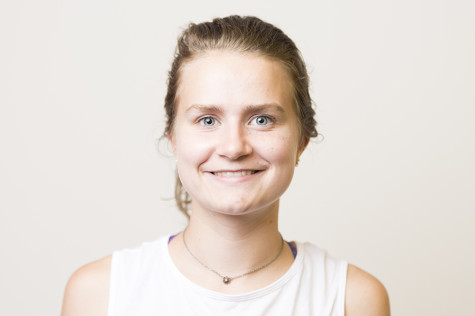Panelists debate body cameras for police
February 19, 2015
In the wake of the Mike Brown and Eric Garner cases, body cameras have been offered as a solution to the issues of transparency. Efficient and appropriate police conduct was debated at NYU School of Law in a panel titled “Promoting Transparency in Police ‘Excessive Force Cases’” on Wednesday.
Professor Samuel Estreicher moderated the panel, which featured Chris Dunn, associate legal director of the New York Civil Liberties Union; Celeste Koeleveld, executive assistant Corporation Counsel for Public Safety; Michael Julian,
deputy commissioner of training for the New York Police Department; Jin Hee Lee of the National Association for the Advancement of Colored People legal defense fund; and several other NYU Law professors.
Body cameras are a potential solution to the perceived lack of transparency in the police force. Koeleveld said while body cameras can be helpful, they still present
certain limitations.
“Having a camera can be
certainly a good thing, but of course it won’t always tell the whole
story,” Koeleveld said. “It is not a solution to every single problem that people identify in police cases. Some of the he said she said will
certainly be solved, but some questions will still remain.”
Dunn said he saw fewer problems with body cameras because they are helpful in monitoring police accountability.
“There are two very big sets of considerations: there’s the set of privacy considerations, and there’s the set of police accountability considerations,” Dunn said. “We get very upset and indignant about police videotaping regimes, including here in New York City. But we also have been very aggressive in trying to support and bolster police
accountability.”
Dunn added the key to finding the balance between privacy and police accountability is precise policy.
“It identifies very specific circumstances in which recording must be made,” Dunn said. “It identifies very specific circumstances in which recording may not be made. It provides that the officer is to give notice to the person who is being recorded. It provides that the recording must continue until the completion of the law enforcement action.”
Julian said new tools like body cameras are not enough unless there is policy and training to back them up.
“We can develop a training program,” Julian said. “But the real test is not developing it, it’s getting cops to accept it, practice it and sustain it.”
As part of the training, Lee brought up the issue of anti-bias training. Lee said the training was essential to overcoming prejudices.
“I think that’s what’s really
needed in law enforcement all across the country,” Lee said. “Obviously training to address explicit forms of racial violence and other forms of discrimination, but also to address implicit violence.”
NYU Law student Stacy Eriksson said although the debate of proper policing is controversial, she is still interested in digging deeper as a social activist.
“My interest in going to law school is as an activist in racial injustice,” Eriksson said. “We see how much bias there is in the community, and how much bias there is in the criminal justice system, so I wanted to hear about the different opinions on that.”
A version of this article appeared in the Thursday, Feb. 19 print edition. Email Justine Morris at [email protected].















































































































































